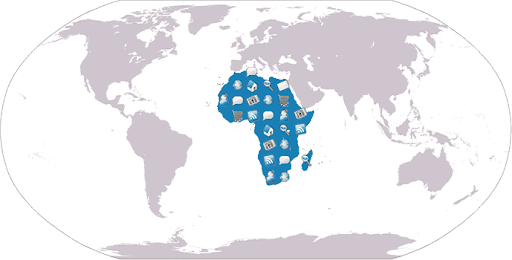Bespoke UI for Developing Regions?

The continent of Africa is experiencing an unprecedented growth in mobile interactive systems.
Most people should consider that a good thing. Mobile interactive systems--specifically information-oriented systems--are attributed with progression in the fields of
- Civic engagement
- Economic empowerment
- Education
- Environment
- Health and safety
- Humanitarian relief
source
If you disagree, stop Googling until you're convinced. (By the way, try not to take Googling for granted. You're actually quite privileged.)
As a UI Designer for Nokia, I design UIs which are meant to leverage the features of a mobile phone. The features are intended to address the needs of painstakingly researched consumer segments. We design for segments, because one size doesn't necessarily fit all.
It turns out that it's very difficult to design "globally" in many cases.
"To achieve culturally sensitive, successful global access to UIs provides many design challenges in the UI development process."(Understatement courtesy of
So if such an emphasis is placed on segmenting markets, spending money on consumer research, designing for sub-populations (e.g. 18 - 24 year-olds, technology enthusiasts, business people) and running usability tests on representative samples of the population, why are huge percentages of populations having such difficulty accessing information??
I believe the problem is lack of bespoke UI design, and supporting infrastructure, by product of innovative contextual design.
(Bespoke + UI = User Interfaces tailored to specific needs [of a user or user group].)
In a Nigerian survey on the obstacles to use of mobiles in rural areas among market traders it was found that:
"42% had difficulty understanding the phone menus"The so called "Developing World" is apparently in possession of "hand-me-down" systems that just don't quite fit.
(source)
If the systems don't fit the needs of the users, as mentioned above, the harder the system is to leverage and the less beneficial it becomes.
Ergonomics, Systems Analysis, Usability, various branches of HCI, etc. have been tried and tested and proven to be effective in improving accessibility to interactive systems. For reasons not completely clear to me, these sets of methods and techniques are not being heavily used in bringing Information Communication Technology (ICT) to the so called "Next Billion" users.
I think it's time to change that. Some prominent academics also seem to think so.
Labels: methodology, mobile

1 Comments:
Your point about 'hand me down' mobile devices, that are designed for non-African users (i.e. European/American users) is very interesting.
I would agree that it's important to design the user interfaces for the particular group of people from the start. It's clear that contextual research is required to understand users in Africa. We need UI designs that focus on the needs of people in developing countries, in order to really empower them and provide easy access to the mobile device features that will enrich their lives, and develop those markets further.
Post a Comment
Subscribe to Post Comments [Atom]
<< Home